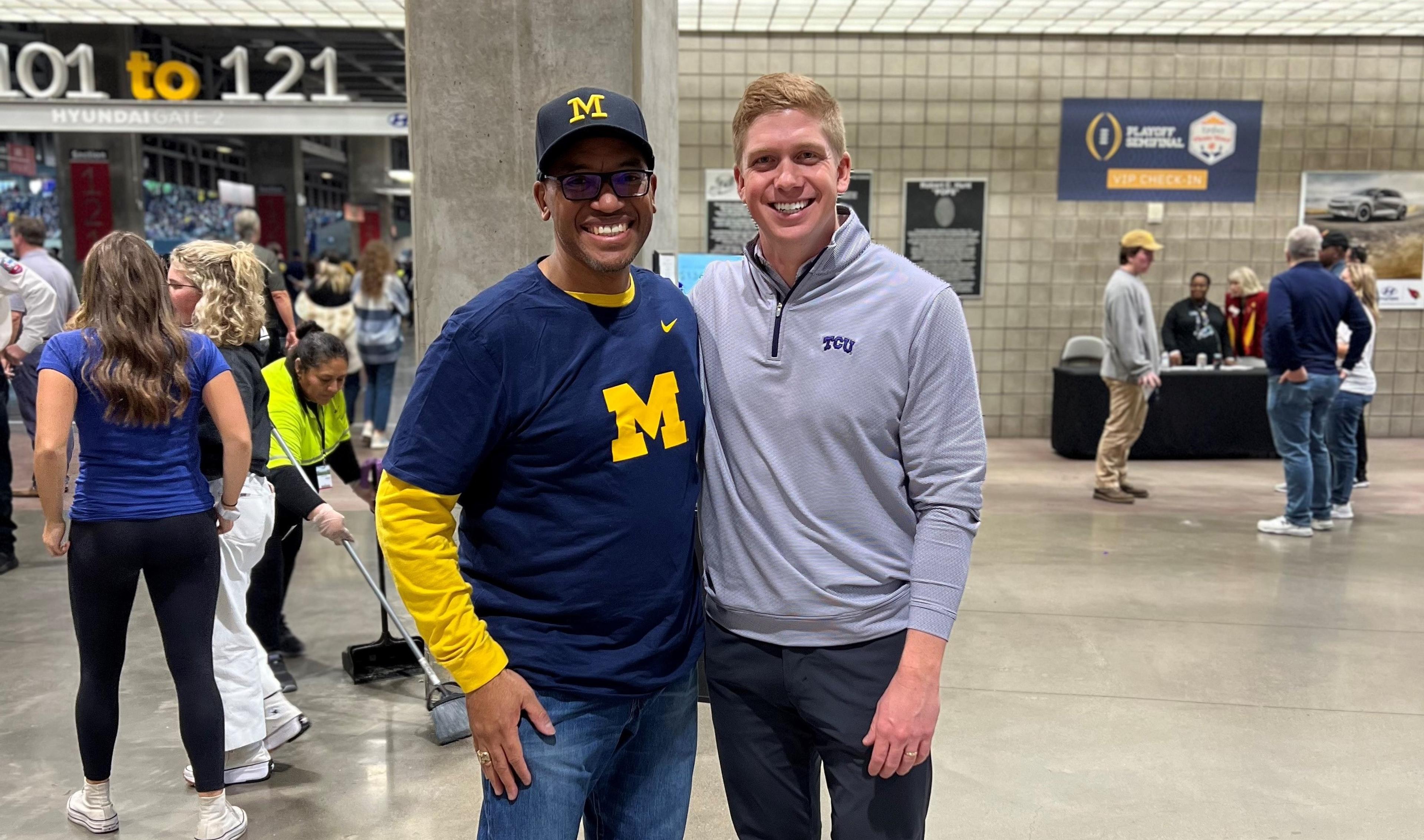What is Culturally Congruent Mental Health Care?
Jake Newby
| 6 min read

When health care is culturally congruent, the clinician or provider shares the same ethnicity and similar life experiences as the client. When a client is a Black male and their behavioral health provider is a Black male, and they share similar life experiences, that is culturally congruent care. When the client is a Hispanic woman and their behavioral health provider is a Hispanic woman, and they share similar life experiences, that is culturally congruent care.
Culturally congruent – and culturally responsive – mental health care is important because people are more likely to seek care and achieve a positive outcome when they feel comfortable developing a relationship with someone who understands what it’s like to be in their shoes.
“It’s critical,” said Daicia Price, PhD, LMSW, a clinical assistant professor of social work at University of Michigan School of Social Work. “What we know based on research of the therapeutic process is, the two biggest predictors of client success are their relationship with their provider and their provider’s belief in their recovery. Since we know that about patients, we can think about patients who are hesitant to engage with people who don’t look like them (OR) who don’t understand their experience, we can predict they might not want to engage in the same way.”
Being culturally responsive in the mental health field means doing a total biopsychosocial assessment of a client’s cultural needs and adapting the strategies necessary as a clinician to make themselves responsive to a client’s needs, according to Price.
“When we think about that, let’s look at Michigan,” she said, illustrating an example of culturally responsive care. “A Black person from Washtenaw County and a Black person from Wayne County, their cultural experiences are different. To be responsive to those people means you are taking all of who they are, their geographic background, their age, all those pieces to be responsive to what they need. You need to recognize all of who they are.”
There are many factors that may limit access to culturally congruent behavioral health care for individuals. One factor is the diversity representation of the behavioral health workforce. In 2021, the American Psychological Association (APA) interactive data tool showed that 81% of the psychology workforce was white, while 18% were racial/ethnic minority psychologists. The United States population by ethnicity in 2021 was about 59% white and 41% racial/ethnic minority meaning there is a large gap to bridge if more people are going to receive culturally congruent care. Clinicians of color like Price are passionate about making congruent mental health care more widespread and more accessible in Michigan.
Recognizing barriers to culturally congruent care and taking steps to break them down
Price works in communities in the Southfield and Detroit areas that are listed as Mental Health Care Health Professional Shortage Areas (HPSAs), meaning they are medically underserved populations. Additionally, there are other considerations when we look at access to health care in public and private settings. Price views it as a two-pronged problem that affects both clients and clinicians. In public therapy settings, like community mental health centers, clinicians can provide treatment for low-income clients. The public mental health care system should be utilized for those who require medication or have an immediate psychiatric need. Private mental health services provide more personalized, effective and timely care, but they come at a cost. That cost deters clients and can introduce other issues even if that client is insured, like long distance between themselves and the provider they have chosen for their care, which then makes transportation a problem.
“When you have a severe and persistent mental illness you can often be served in community mental health settings, but if you want to talk to someone because you have anxiety or depression – what are considered mild to moderate mental health issues – you’re typically served in non-public settings,” Price explained. “So, when we start thinking of the number of clinicians of color that work in non-public settings, that number becomes even smaller than what is an already small number of clinicians of color.”
Price said she knows people who have struggled to find culturally congruent mental health care through their network of providers.
“I had a Black male who’s a friend, call me the other day and say, ‘They gave me this list but it’s just like a blur,’” Price said. “And he’s been living with grief over the loss of his child’s mother for two years. And he’s struggling, but he’s gotten to a place where he will accept help, but he can’t find it.”
She added that some of the same socioeconomic issues that can hinder people of color from seeking quality, personalized treatment can hinder clinicians of color who sometimes have to choose between public employment and establishing a private practice.
“Through my own lens, coming out of graduate school, being a clinician, I needed a position that offered health benefits and I needed to work right away because I have children and all of those things,” Price said. “I did not have the knowledge or skill set or time to complete all the credentialing requirements for an insurance company and become private. I couldn’t complete all that and wait for that without working.”
Price shared that there are possible ways to increase the number of private clinicians of color over time from fellowships to partnerships with colleges and health plans.
“Partnering with universities that are granting these degrees, and developing fellowship programs for clinicians that are underrepresented minorities, that would support them in becoming prepared to be credentialed and impaneled with an insurance company,” Price said. “This fellowship model would provide training and support to these clinicians that align with their quality standard.”
‘Don’t be discouraged:’ Guidance for people of color seeking behavioral health treatment
Despite unfavorable statistics, Price said clients of color hoping to connect with culturally congruent and responsive providers should not be deterred from reaching out for help.
“I would say, don’t be discouraged, because there are some of us out here,” Price said. “Continue to try and find people. And if you do find someone in your network, don’t wait until we address these system issues, get a provider, and push them and tell them that you need them to be culturally responsive. Tell them that is something that is important to you.
She also mentioned that it’s crucial to cultivate relationships with a culturally congruent and/or responsive provider, and to advocate for yourself as a client if you feel like you aren’t getting a lot out of the relationship.
"All of us have codes of ethics that say we need to deliver the best care possible and that means taking their cultural needs into consideration,” she went on. “Push these providers to seek additional education. Let them know if they’re making the mark. Don’t just sit there and be like, ‘Oh they don’t get it.’ Let them know. Because we know there are a limited number (of clinicians of color), advocate for yourself to get the services you deserve.”
Keep reading:
- New Crisis Services Provide Support for Urgent Behavioral Health Concerns
- BCBSM Progressing in Work to Reduce Maternal Health Disparities
- Women in Tech at Blue Cross Encourage Next Generation of Workers
Photo credit: Getty Images





